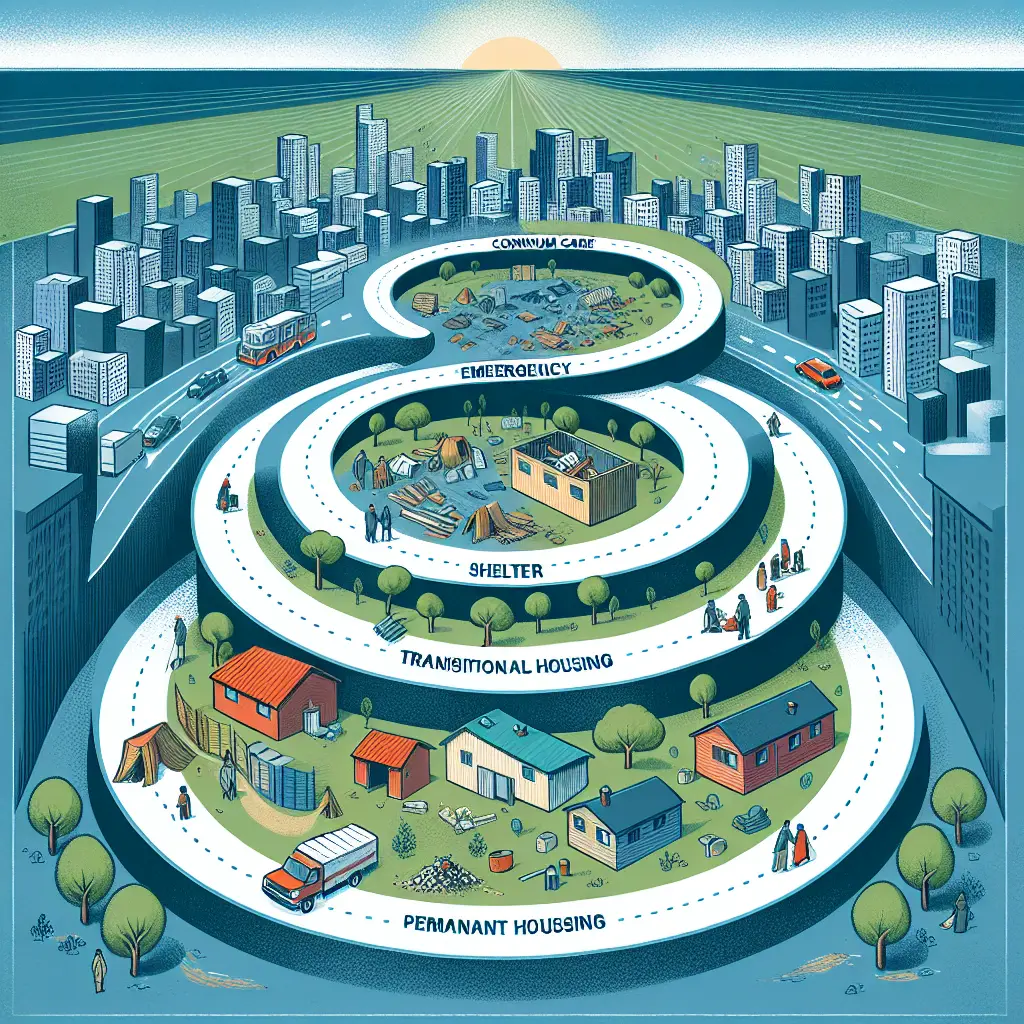Continuum of Care (CoC)
Description
Understanding the Continuum of Care in Addressing Homelessness
Definition
Continuum of Care (CoC) refers to a collaborative funding and planning approach that helps communities plan for and provide a full range of emergency, transitional, and permanent housing and services to address the various needs of homeless individuals and families.
Description
The Continuum of Care approach is an integrated approach dedicated to addressing homelessness in a comprehensive way. This broad-spectrum solution encompasses various housing types and services aimed at meeting the diverse needs of homeless populations. CoC creates a supportive network across different service providers, leaving no gaps in the service provision. It involves all stakeholders including government entities, non-profit organizations, and local communities.
Objectives
- To ensure comprehensive planning and strategic use of resources to address homelessness.
- To promote community-wide commitment to the goal of ending homelessness.
- To increase access to, and effective utilization of, mainstream programs by homeless individuals and families.
- To optimize self-sufficiency among individuals and families experiencing homelessness.
Mechanisms
- Integration of housing services to accommodate different needs, including emergency shelters, transitional housing, and permanent housing.
- Collaboration among different organizations, services, and agencies to ensure effective coordination and efficient resource use.
- Incorporation of essential services such as mental health support, substance abuse counseling, and job training alongside housing solutions.
- Regular data collection and performance measurement to ensure effectiveness and identify areas of improvement.
Benefits
- Comprehensive approach to addressing homelessness ensuring no one is left behind.
- Increased efficiency and effectiveness in the use of resources.
- Improved outcomes for homeless individuals and families.
- Facilitates collaboration and coordination among various service providers.
Challenges
- Finding sustainable funding sources to maintain and extend services.
- Ensuring consistent and efficient collaboration among diverse stakeholders.
- Addressing unique needs and challenges of different homeless subpopulations e.g., veterans, youth, families etc.
- Continuous data collection and performance measurement can be resource-intensive.
Examples
- The Los Angeles County CoC provides coordinated housing services and supportive programs for the homeless population in LA.
- The Dallas CoC, integrates housing, health, and social services to effectively address homelessness in Dallas.
- The New York City CoC offers an extensive range of services from emergency shelters to permanent housing to meet the diverse needs of their homeless population.



